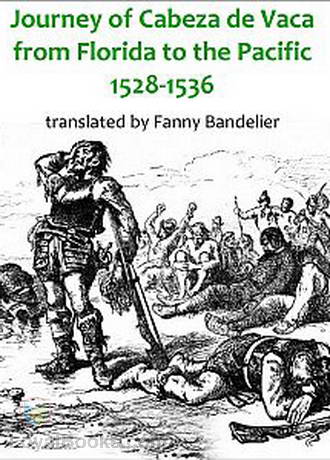
By: Alvar Núñez Cabeza de Vaca (ca. 1490/1507 - ca.1557/1579)
Alvar Núñez Cabeza de Vaca's account of his journey is a gripping and harrowing tale of survival and resilience. Through his detailed and vivid descriptions, the reader is transported back in time to witness the challenges and hardships faced by Cabeza de Vaca and his companions as they navigate the harsh terrain of the New World.
The book paints a vivid picture of the struggles faced by the Spanish explorers as they traverse unknown lands, battle hostile indigenous tribes, and grapple with hunger, disease, and the elements. Despite the overwhelming odds against them, Cabeza de Vaca and his men display incredible courage and tenacity, never losing hope or giving up on their quest to find their way back to civilization.
One of the most compelling aspects of the book is Cabeza de Vaca's profound empathy and respect for the indigenous people he encounters along his journey. His willingness to learn from and adapt to their ways of life sets him apart from many other explorers of his time and serves as a powerful reminder of the importance of cultural understanding and respect.
Overall, The Journey of Alvar Núñez Cabeza de Vaca is a remarkable and compelling account of one man's incredible odyssey through unknown lands. It is a testament to the human spirit and the power of perseverance in the face of adversity. Book Description:
Few stories of shipwreck and survival can equal that of the 16th century Spaniard Alvar Núñez Cabeza de Vaca who, cast ashore near present day (USA) Tampa Bay, Florida, in 1528, survived eight years of hand-to-mouth existence among the Indians of the South and Southwest, and who walked on foot across the plains to the Pacific Coast, arriving in Mexico in 1536. In 1542 he published an account of his adventures, and the present reading is based on Fanny Bandelier’s English translation of that text.
Cabeza de Vaca, along with three other survivors, two Spaniards and a North African (Estévanico, a black slave) endured incredible hardships. Cabeza da Vaca was, himself, at first enslaved by the Indians, forced to dig roots with his bare hands for food. However, he soon showed powers of adaptation that allowed him to survive. He became a trader, bartering “seashells and cockles” from the coast for hides, red ochre, flint, and deer hair tassels from the inland tribes. “Trade suited me well,” he writes, “because it gave me liberty to go where I pleased.” The Indians “rejoiced greatly when seeing me and I would bring them what they needed, and those who did not know me would desire and endeavor to meet me for sake of my fame.” Cabeza de Vaca’s “fame” soon grew to include a reputation as a healer. In return for his “cures,” the Indians gave him “all that they had,” which included food, often in perilously short supply.
The success of the survivors’ final overland treck in search of Spanish settlement reflected their comprehension of Indian customs and values. They were passed along from one tribe to another, accompanied by an entourage of friendly natives. At each stop, Cabeza de Vaca saw to it that the food and presents he received were distributed to his followers by their chiefs, thus ensuring their loyalty.
After eight years among the Indians, Cabeza de Vaca had a hard time adjusting to “civilization.” He writes that the Spanish governor in Mexico “received us very well, giving us what he had, for us to dress in; but for many days I could bear no clothing, nor could we sleep except on the bare floor.” His first person narrative is an exciting tale of survival “against the odds.”
(Introduction by Sue Anderson)
|
